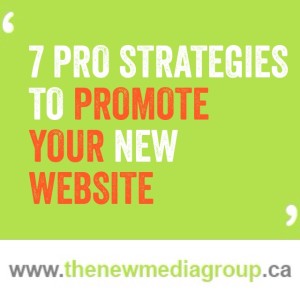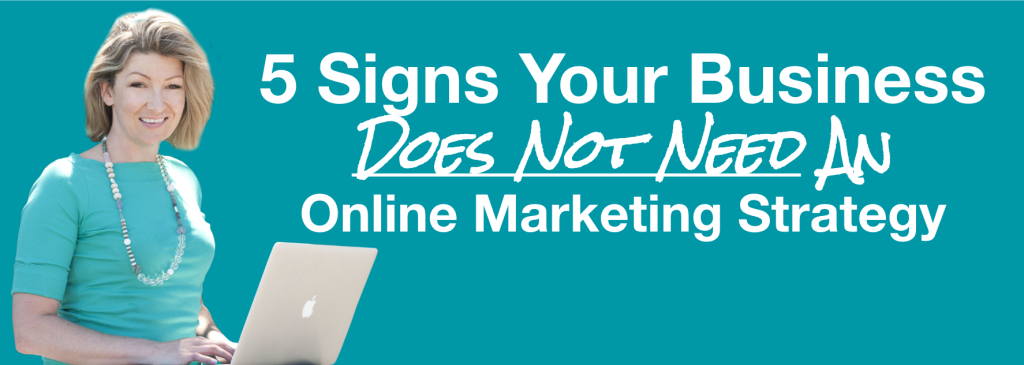 5 signs you don’t need an online marketing strategy.
5 signs you don’t need an online marketing strategy.
An online marketing strategy can be described a detailed written plan that explains exactly how you’ll market yourself and your business on the internet.
The development of an online marketing strategy can call for a significant investment of both time and money.
Before you spend your time and money, you may want to consider the following points to find out if you really need an online marketing strategy.
What is online marketing?
Online marketing is an umbrella term used to describe online tools that can be used for the purposes of marketing a person or business. Facebook ads, email broadcasts, getting on google and your website are all online marketing tools.
These are by no means an exhaustive list of online marketing tools, though.
In fact, the world of online marketing changes almost daily. New tools are constantly emerging, old tools dissolving and familiar behemoths changing their functionality or design almost entirely overnight.
Why do businesses market themselves online?
Consumers are savvy creatures. You know, you’re one of them!
In response to being inundated with advertising, we’ve adapted. We have spam filters, Netflix subscriptions and caller ID’s to help us avoid being sold to.
In the same breath though, we’re spending literally hours a day online. (Over 24 hours a week online in 2016 according to the Globe & Mail.)
Being in business, it pays to have a presence where your future customers are, so it makes sense to invest in a presence on Facebook, Google, YouTube and on other online marketing tools like your website.
When is developing an online marketing strategy a waste of time?
There are several scenarios when developing an online marketing strategy isn’t a good idea.
#1 – The first sign you don’t need an online marketing strategy.
The first is if you or the majority stakeholders in your business are of the opinion the internet isn’t a huge opportunity for businesses and business people alike.
Don’t laugh.
This is a reality for some people. Most commonly those who are just about to retire, those who don’t have cell phones and those who are generally resistant to change.
#2 – The second sign you don’t need an online marketing strategy
Another sign you shouldn’t invest in an online marketing strategy is when what you’re already doing is working well really well for your business, and for you personally.
Some businesses reliably experience an influx of new customers and sales from the internet. These leads and sales are willing to pay for what’s being sold and turn a tidy profit.
Sometimes this result can happen fairly easily and naturally, especially if the business owner is really in touch with their customers, where their customers hang out online and when they have an interest in learning online marketing.
#3 – The third sign you don’t need an online marketing strategy.
You’re confident.
You’re measuring your results, you know what works, what doesn’t and what tactics have the best return on investment.
Generating results and feeling confident in your abilities add up to an ideal situation, one where you likely don’t need any further support.
If you don’t find yourself in any of these three situations, it may be worth additional exploration to find out for certain whether or not an online marketing strategy will deliver value for your organization.
Other scenarios when an online marketing strategy doesn’t make sense are:
You may find you need an online marketing strategy, but you’re not able to allocate the resources.
You don’t want, or can’t handle any more business
When is developing an online marketing strategy a good idea?
The following symptoms usually indicate when it may be a good idea to invest in an online marketing strategy.
#1 You’re feeling less than confident:
You’ve been successful with your online marketing efforts to date.
Your business is making money, but you’re not feeling very confident you’re going about your online marketing the right, best or most effective way.
You may be wondering if you’re missing something. You may be worrying about whether you should have a presence on the latest social media site, or if it’s a waste of time. Any leads or sales that you’re getting from the internet may be fairly sporadic, so it’s not a very reliable source of leads.
#2 You’re not generating results:
You could have a very successful offline business, have an online marketing budget and believe online marketing can generate opportunities for you. But everything you’ve tried is a colossal waste of time and money.
#3 Your competitors are kicking your butt:
You may be noticing that your competitors appear to be doing a little bit better than you are. Whether it’s they are ranking better than you are on Google or their social media is getting more engagement or whether you’ve just heard through the grapevine that they’re doing better than you are financially.
#4 You can’t delegate:
You may want to delegate some of your online marketing responsibilities but you’re having difficulties doing so, because you don’t really know what to say to the person you’re delegating to.
#5 Your market is changing:
If you’re looking to expand or pivot into a different market, and you want to use the internet to drive leads, it makes sense to look at developing an online marketing strategy.
What kind of results can I expect from a strategy?
According to the Business Development Bank of Canada small business that have an online marketing strategy and are actually executing it can see revenues up to 22% higher than their competitors.
Obviously 22% more revenue is a significant increase in funds. That may be just the right incentive to invest in a strategy.
Why is a strategy that much more effective?
Without an online marketing strategy, typically anything that gets done in the area of online marketing is sporadic or reactive. It’s what we in the business call “spray and pray”. What this means is that you’re out there testing everything out publicly.
Remember the internet never forgets, so being reactive and inconsistent can compromise your brand and erode the trust you’re trying to build with your audience.
Instead of building on the solid blocks of a foundation, each tactic or effort is acting individually instead of in concert where you can expect a compound effect.
Obviously I am biased, but truly and in the long term an online marketing strategy is much more effective for resource allocation if you’re at all invested in marketing your business online.
An online marketing strategy can save you time, save you money and most importantly it can going to keep those sales coming in and keep those profit margins high.


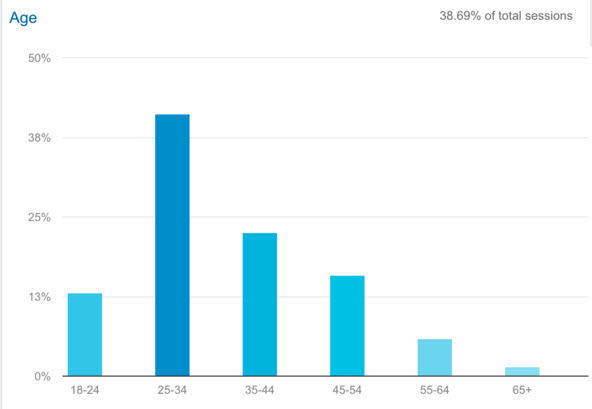
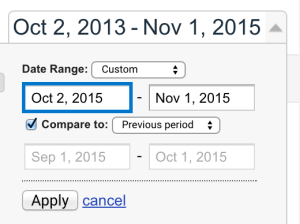
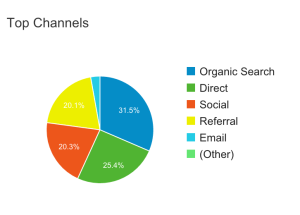 Ideally, this is going to be diversified, showing traffic from:
Ideally, this is going to be diversified, showing traffic from: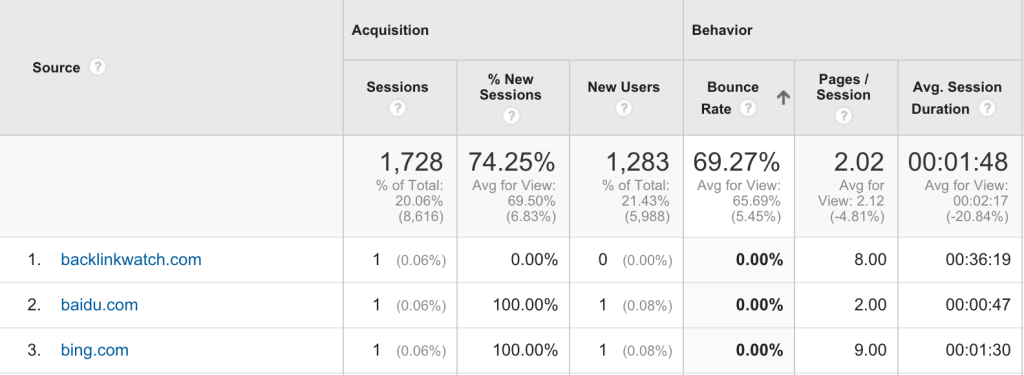
 Again, if you’re promoting a particular page, say, using Google Adwords, or promoting a specific page by posting your blog posts to social networks, you can see what pages are working and which ones aren’t.
Again, if you’re promoting a particular page, say, using Google Adwords, or promoting a specific page by posting your blog posts to social networks, you can see what pages are working and which ones aren’t.